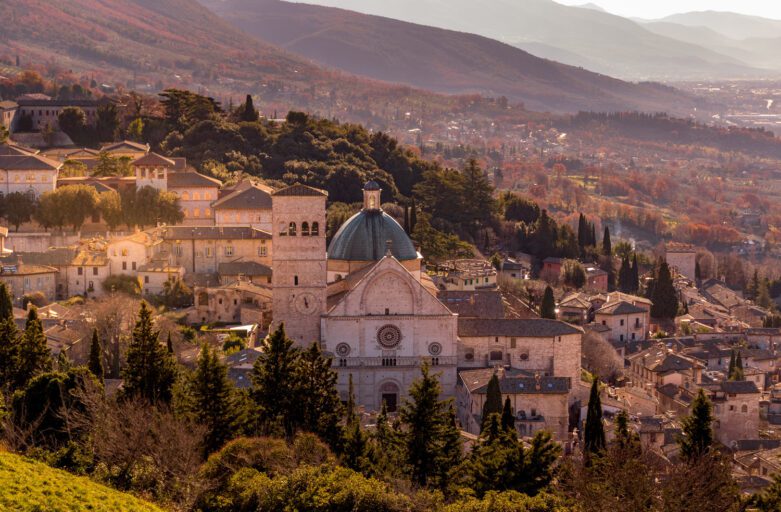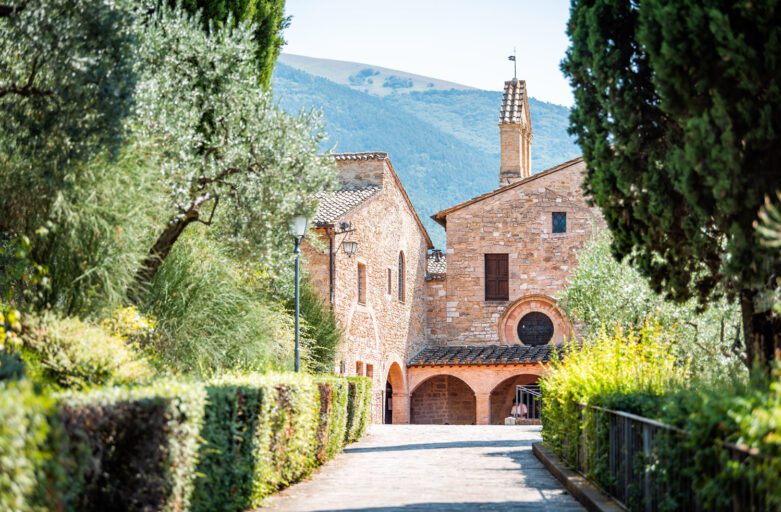From Grotto to Shrine
The architectural complex called “Hermitage of Carceri” started and developed around a grotto in which Saint Francis of Assisi used to retreat in order to pray. The Hermitage of Carceri is a place of memory, kept alive by the Franciscan friars who still live there; and a place of witness, as well, permeated with spirituality. Here preserved is not only the very place where Francis talked with God, but also the way in which the little poor friar kept in contact with the Lord while closely in touch with Nature. Francis in fact immersed himself in the contemplation of all created things, which according to him were a sign of God's love – to the extent of calling even the smallest natural beauty his “sister,” as his biographer, Saint Bonaventure, says: “While considering that all things share a common origin, he felt all the more full of compassion, and called all creatures, however small, by the name of brother or sister” (Legenda Maior, VIII.6). In a thick wood at the feet of Mount Subasio, some 2,400 feet on sea level, during Francis' time there were natural grottoes and just a very small church called Saint Mary of Carceri. The warm color of the stones, the material in which the church and later the whole shrine was built, is in perfect harmony with the green of Nature all about, and makes this site, embedded in Umbrian woods, a really unique place.
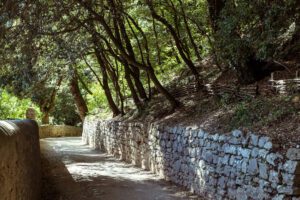
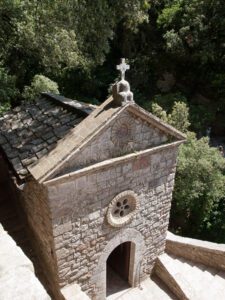
Freedom in “Jail”
Francis “discovered” this place after having been taken prisoner in the 1202 battle between Perugia and Assisi. After more than a year in jail, he was freed, and started his path to conversion. Then a young man, Francis looked for a place far from all, so as to be able to concentrate on prayer and try to find an answer to his questions. He chose the grotto in this holly oak wood, a true hermitic place. Usually, a hermitage is a quite lonely place where some people – the hermits – chose to live secluded from the “world.” The name Carceri, used for this place, does not actually make reference to its current Italian meaning, that is “jail,” but comes from a Medieval phrase: se carcere, to retreat in prayer in some small, unadorned spot, like a grotto. In contradiction with a concept of being segregated as if it were the same as being jailed, here our Saint could experience freedom from all things, first to the benefit of himself, then sharing it with his brothers. This is why, during his lifetime, he would often come back to this hermitage, and spend many days here. Not much time after his death, the hermitage turned into a place fit for a community, where they built a small convent for those few Franciscan friars who chose contemplative life.
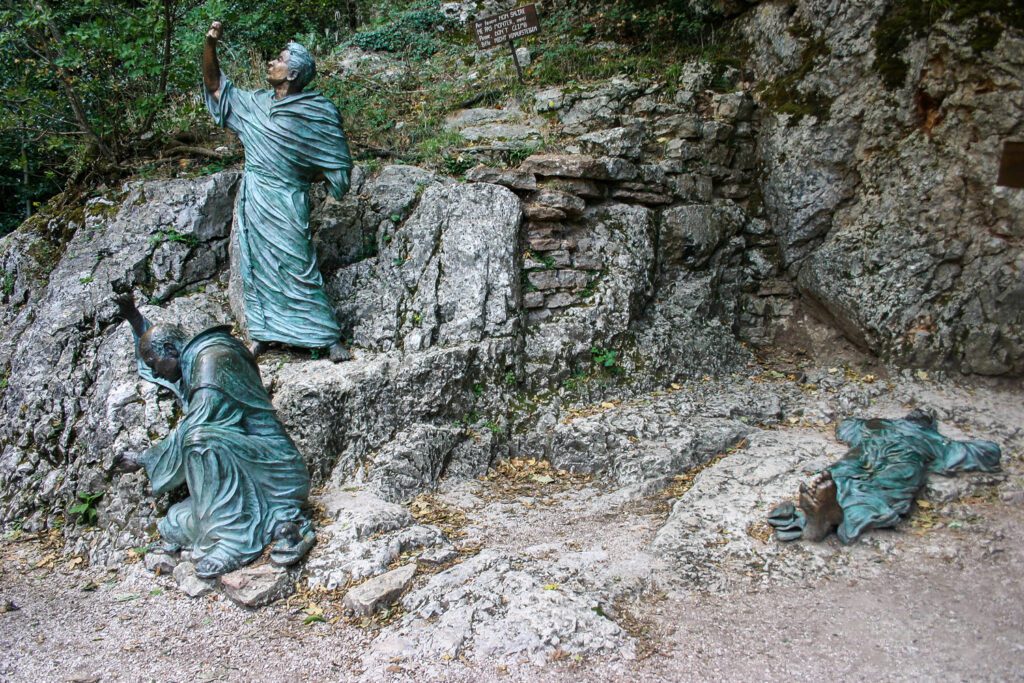
The Carceri Area
When Saint Francis “jailed himself” here with his followers, there was nothing to be seen that nowadays is. The current structure was in fact built in the 15th century by decision of another Franciscan Saint, Bernardine of Siena (1380 – 1444). While visiting the hermitage, you will enter a triangular courtyard, very simple and bare, with a well in the middle that reminds us of water springing because of an alleged miracle of Saint Francis. On one side of the courtyard there is a 15th century church dedicated to Saint Bernardine. It includes a fresco representing a Crucifixion, dating back to the mid-15th century; moreover, a small glass window of French manufacture, and a later painting with the emblem of a Monte di Pietà (literally, “mount of compassion”). A Mount di Pietà was a charity that gathered money from both institutions and private citizens in order to grant cheap loans to the people of towns or from the countryside, letting them get cash money without having to pay interests. The charity was founded in Perugia in 1462 by two Franciscan friars, Blessed Michele Carcano and Brother Barnaba Manassei from Terni (Umbria), the latter being buried in the Chapel of Mary Magdalene in this very shrine. For the benefit of the community living within the complex, in the 15th century a refectory was built, namely a room in which they shared their meals.
“The Devil's Hole”
The tour continues with the original church of Saint Mary of Carceri; then a staircase leads to the grotto of Saint Francis, where his bed is shown – a stone mattress! Again out of the grotto, a floor with a small hole, called “the Devil's hole,” covers the underlying crevice. In The Little Flowers of Saint Francis, ch. 29, we read that Brother Rufino, who lived here, had been caught in the devil's tricks. So, Francis suggested him a witty answer that would unveil the devil and make him flee. The Evil One, angry with Rufino's words and making great noise, fell from the hermitage cliff, never to come back. This fictional episode has a deep meaning: man can fall into temptation, and, if left without help, even question God's love.
Carrying on the tour by a walk in the wood, it will be possible to see the centuries-old holly oak in front of which – so tradition runs – Francis proclaimed the Good News to the birds.
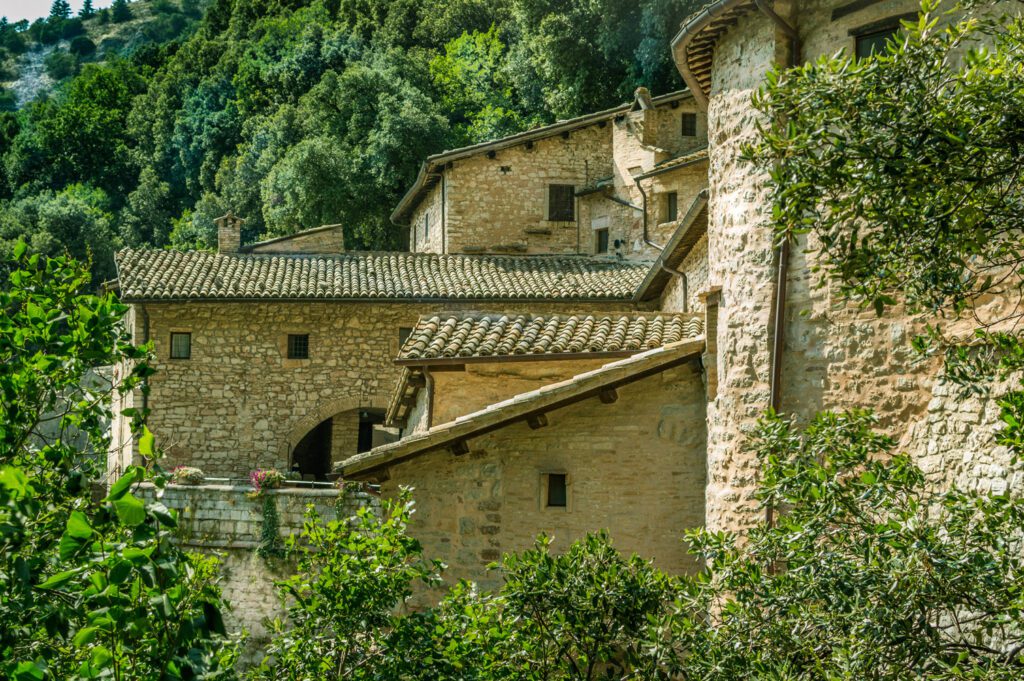
Wonderful Harmony
The friars still nowadays keep this sacred place, which was already known as “the Hermitage of Carceri of Saint Francis” back in 1237. Pope Francis in his encyclical Laudato Si' praises the Saint of Assisi with the words: “He was a mystic and a pilgrim who lived in simplicity and in wonderful harmony with God, with others, with nature and with himself. He shows us just how inseparable the bond is between concern for nature, justice for the poor, commitment to society, and interior peace.”
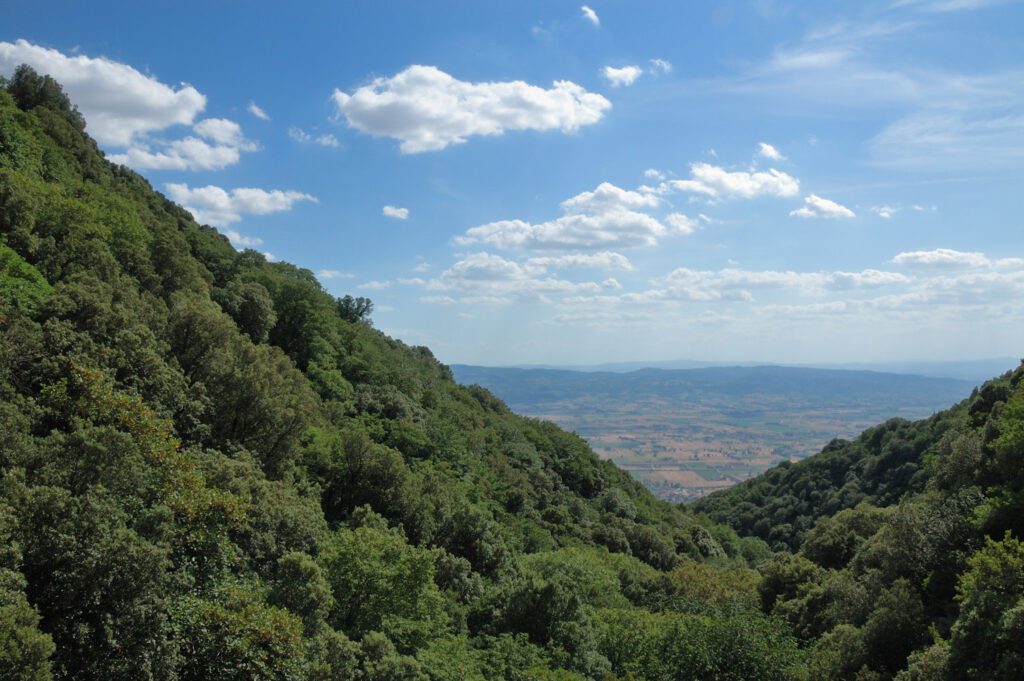
INFORMAZIONI
Località
Piazza Cahen, 5B, 05018 Orvieto TR
Orari
Giugno-Agosto: tutti i giorni 9:00-20:00
1-22 Settembre: tutti i giorni 9:00-19:00
5-11 Ottobre: tutti i giorni 9:00-19:00
12-19 Ottobre chiuso per lavori di manutenzione.
Dal 20 ottobre: tutti i giorni dalle 9:00-19:00
La biglietteria chiude 45 minuti prima dell’orario di chiusura.
Contatti
Email: info@genesiagency.it

